Access premium articles, webinars, resources to make the best decisions for career, course, exams, scholarships, study abroad and much more with
Plan, Prepare & Make the Best Career Choices
NCERT Solutions for Class 11 Chemistry Chapter 4 Chemical Bonding and Molecular Structure
NCERT Solutions For Class 11 Chemistry Chapter 4 Chemical Bonding And Molecular Structure- In NCERT syllabus class 11 chemistry chapter 4 Chemical Bonding and Molecular Structure chapter, you will deal with a concept like what is an ionic bond and a covalent bond, the polar character of covalent bonds, valence electrons, Lewis structure, VSEPR theory, the concept of hybridization that involves s, d and p orbitals, the molecular orbital theory (MOT) and more.
JEE Main Scholarship Test Kit (Class 11): Narayana | Physics Wallah | Aakash | Unacademy
NEET Scholarship Test Kit (Class 11): Narayana | Physics Wallah | Aakash | ALLEN
Suggested: JEE Main: high scoring chapters | Past 10 year's papers
New: Aakash iACST Scholarship Test. Up to 90% Scholarship. Register Now
Also Read:
- NCERT Exemplar Solutions For Class 11 Chemistry Chapter 4 Chemical Bonding And Molecular Structure
- Chemical Bonding And Molecular Structure Class 11 Chemistry Chapter Notes
In the NCERT book for class 11 chemistry chapter 4 Chemical Bonding and Molecular Structure, there are 40 questions in the exercise. The NCERT solutions for Class 11 Chemistry Chapter 4 Chemical Bonding and Molecular Structure are designed and solved by chemistry experts. These NCERT solutions of class 11 can help you in your preparation for class 11 final examination as well as in the various competitive exams like NEET, JEE Mains, BITSAT etc. If you are looking for an answer from any other chapter even from any other class then go with NCERT Solutions , there you will get all the answers of NCERT easily.
NCERT Solutions For Class 11 Chemistry Chapter 4 Chemical Bonding And Molecular Structure - Exercise Questions
Question 4.1 Explain the formation of a chemical bond.
Answer :
The attractive force which holds various constituents (atoms, ions, etc.) together in different chemical species is called a chemical bond . Different theories and concepts have been put forward from time to time to analyze the formation of the bond. These are Kössel-Lewis approach, Valence Shell Electron Pair Repulsion (VSEPR) Theory, Valence Bond (VB) Theory, and Molecular Orbital (MO) Theory.
And every system tends to be more stable and bonding is nature’s way of lowering the energy of the system to attain stability.
Atoms, therefore combine with each other and complete their respective octets or duplets to attain stable configuration of the nearest noble gases. As it was seen that the noble gases are very stable and were inert to react to others.
So, there is a sharing of electrons or transferring one or more electrons from one atom to another, as a result, a chemical bond is formed, known as a covalent bond or ionic bond.
Question 4.2(a) Write Lewis dot symbols for atoms of the following elements :
Answer :
The Lewis dot symbol of Mg atom is;
As there are two valence electrons in Mg atom.
Hence, the Lewis dot symbol for Mg is: .
Question 4.2(b) Write Lewis dot symbols for atoms of the following elements :
Answer:
The Lewis dot symbol of Na atom is;
As there is only one valence electron in Na atom of Na.
Hence, the Lewis dot structure is .
Question 4.2(c) Write Lewis dot symbols for atoms of the following elements :
Answer :
The Lewis dot symbol of atom is;
As there are three valence electrons in atom.
Hence, the Lewis dot structure is 
Question 4.2(d) Write Lewis dot symbols for atoms of the following elements :
,
Answer :
The Lewis dot symbol of atom is;
As there are six valence electrons in an atom of .
Hence, the Lewis dot structure is 
Question 4.2(e) Write Lewis dot symbols for atoms of the following elements :
Answer :
The Lewis dot symbol of atom is;
As there are five valence electrons in an atom of .
Hence, the Lewis dot structure is 
Question 4.2(f) Write Lewis dot symbols for atoms of the following elements :
Answer :
The Lewis dot symbol of atom is;
As there are seven valence electrons in an atom of .
Hence, the Lewis dot structure is 
Question 4.3(a) Write Lewis symbols for the following atoms and ions:
Answer :
As the number of valence electrons in sulphur is six.
Therefore its Lewis dot symbol of sulphur(S) is 
And of is, if it has two electrons more because of its dinegative charge.

Question 4.3(b) Write Lewis symbols for the following atoms and ions:
Answer :
As the number of valence electrons in aluminium is three.
Therefore its Lewis dot symbol of aluminium(Al) is 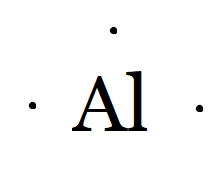
And of is, if it has donated three electrons because of its tripositive charge.
Hence. the Lewis symbol is 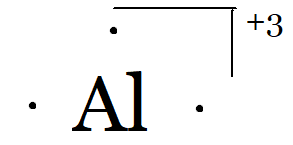
Question 4.3(c) Write Lewis symbols for the following atoms and ions:
Answer :
As the number of valence electrons in hydrogen is one.
Therefore its Lewis dot symbol of hydrogen (H) is 
And of is, if it has one more electron because of its a negative charge develops.
Hence. the Lewis symbol is 
Question 4.4(a) Draw the Lewis structures for the following molecules and ions :
Answer :
The Lewis structure of is:

Question 4.4(b) Draw the Lewis structures for the following molecules and ions :
Answer :
The Lewis structure of is:
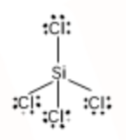
Question 4.4(c) Draw the Lewis structures for the following molecules and ions :
Answer :
The Lewis structure of is:

Question 4.4(d) Draw the Lewis structures for the following molecules and ions :
Answer :
The Lewis structure of is:
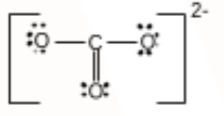
Question 4.4(e) Draw the Lewis structures for the following molecules and ions :
Answer :
The Lewis structure of is:
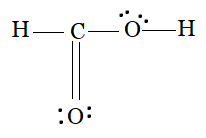
Question 4.5 Define octet rule. Write its significance and limitations.
Answer :
Atoms can combine either by transfer of valence electrons from one atom to another (gaining or losing) or by sharing of valence electrons in order to have an octet in their valence shells. This is known as the octet rule .
Significance : It is quite useful for understanding the structures of most of the organic compounds and it applies mainly to the second-period elements of the periodic table
Limitations : There are three types of exceptions to the octet rule.
- The incomplete octet of the central atom - the number of electrons surrounding the central atom is less than eight.

- Odd-electron molecules - the octet rule is not satisfied for all the atoms in
.

- The expanded octet - there are more than eight valence electrons around the central atom. This is termed as the expanded octet. Some of the examples of such compounds are PF5, SF6, H2SO4 and a number of coordination compounds.

Question 4.6 Write the favourable factors for the formation of ionic bond.
Answer :
Formation of ionic bond takes place by the transfer of one or more electrons from one atom to another.
So, ionic bond formation mainly depends upon the ease with which neutral atoms can lose or gain electrons.
The bond formation also depends upon the lattice energy of the compound formed.
Ionic bonds will be formed more easily between elements with comparatively low ionization enthalpies and elements with a comparatively high negative value of electron gain enthalpy.
Question 4.7(a) Discuss the shape of the following molecules using the VSEPR model:
,
Answer :
Using the VSEPR model we have,
THe central atom has no lone pair and there are two bond pairs.
is of the type
hence, it has a linear shape . 
Question 4.7(b) Discuss the shape of the following molecules using the VSEPR model:
(b)
Answer :
Using the VSEPR model we have,

The central atom has no lone pair and there are three bond pairs.
is of the type
hence, it has trigonal planar shape. 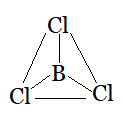 a
a
Question 4.7(c) Discuss the shape of the following molecules using the VSEPR model:
(c)
Answer :
Using the VSEPR model we have,
The central atom has no lone pair and there are four bond pairs.
is of the type
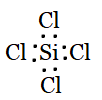
hence, it has tetrahedral shape. 
Question 4.7(d) Discuss the shape of the following molecules using the VSEPR model:
(d)
Answer :
Using the VSEPR model we have,
THe central atom has no lone pair and there are five bond pairs.
is of the type
Hence, it has trigonal bipyramidal shape. 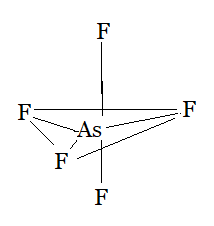
Question 4.7 (e) Discuss the shape of the following molecules using the VSEPR model:
Answer :
Using the VSEPR model we have,
The central atom has no lone pair and there are two bond pairs.
is of the type
Hence, it has a bent shape. 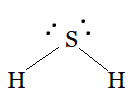
Question 4.7(f) Discuss the shape of the following molecules using the VSEPR model:
(f)
Answer :
Using the VSEPR model we have,
THe central atom has no lone pair and there are three bond pairs.
is of the type
Hence, it has trigonal bipyramidal shape. 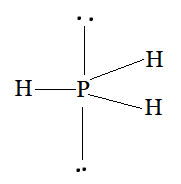
Question 4.9 How do you express the bond strength in terms of bond order ?
Answer :
Bond Strength gives us that amount of energy needed to break a bond between atoms forming a molecule.
So, with an increase in bond order, bond enthalpy increases as a result bond strength increases.
Question 4.10 Define the bond length.
Answer :
Bond length is defined as the equilibrium distance between the nuclei of two bonded atoms in a molecule.
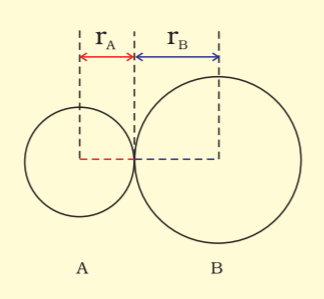
The bond length in a covalent molecule AB.
where (R is the bond length and
and
are covalent radii of atoms A and B respectively.
Question 4.11 Explain the important aspects of resonance with reference to the ion
Answer :
The single Lewis structure based on the presence of two single bonds and one double bond between carbon and oxygen atoms is inadequate to represent the molecule accurately as it represents unequal bonds. According to the experimental findings, all carbon to oxygen bonds in CO3 2– are equivalent. Therefore the carbonate ion is best described as a resonance hybrid of the canonical forms I, II, and III shown below.

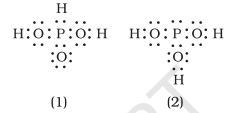
Answer :
As per the rule, it is not having the same position as the atoms and is changed.
Hence the given structures cannot be taken as the canonical forms of the resonance hybrid.
Question 4.13 Write the resonance structures for
and
Answer :
The resonance structures

The resonance structures

The resonance structures

Question 4.14(a) Use Lewis symbols to show electron transfer between the following atoms to form cations and anions :
Answer :
K and S:
We have the electronic configurations of both:
having 1 electron in the valence shell, and it can donate 1 electron to get to the nearest noble gas configuration.
having 6 electrons in the valence shell, and it wants to complete its octet by accepting 2 more electrons.
So, there will be an electron transfer between them as follows:
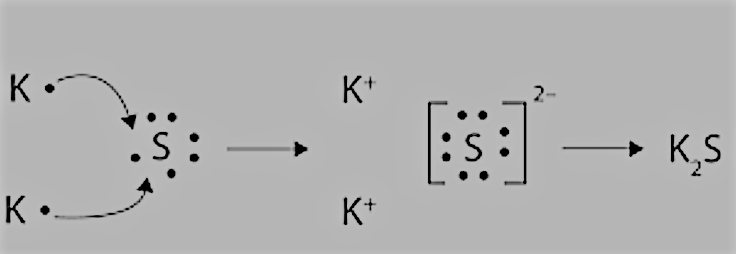
Question 4.14(b) Use Lewis symbols to show electron transfer between the following atoms to form cations and anions :
Answer :
:
We have the electronic configurations of both:
having 2 electrons in the valence shell, and it can donate 2 electrons to get to the nearest noble gas configuration.
having 6 electrons in the valence shell, and it wants to complete its octet by accepting 2 more electrons.
So, there will be an electron transfer between them as follows:
transfer between them as follows:
Question 4.14(c) Use Lewis symbols to show electron transfer between the following atoms to form cations and anions :
Answer :
:
We have the electronic configurations of both:
having 3 electron in the valence shell, and it can donate 3 electron to get to the nearest noble gas configuration.
having 3 electrons in the valence shell, and it wants to complete its octet by accepting 2 more electrons.
So, there will be electron transfer between them as follows:

Answer :
H2O molecule, which has a bent structure, the two O–H bonds are oriented at an angle of 104.50. Net dipole moment of 6.17 × 10–30 C m is the resultant of the dipole moments of two O–H bonds.
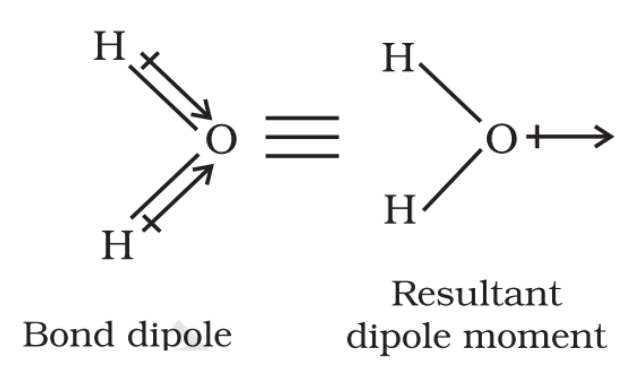
While on the other hand. The dipole moment of carbon dioxide is zero. This may be because of linear shape of the molecule as it has two C-O bonds which has opposite dipole moments cancelling each other.
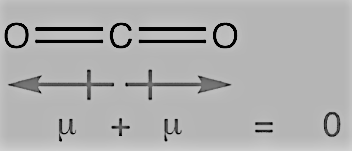
Question 4.16 Write the significance/applications of dipole moment.
Answer :
Some of the important significance of the dipole moment is as follows:
We can determine the shape of the molecule. Symmetrical molecules like linear, etc. do have zero dipole moment, whereas if not symmetrical then they take different shapes such as bent shape or some angular shapes.
For determining the polarity of the molecules. Greater the dipole moment value, more will be the polarity and vice-versa.
We can say that if a molecule has zero dipole moment then it must be non-polar and if it is non-zero then it must have some polar character.
Question 4.17 Define electr negativity. How does it differ from electron gain enthalpy ?
Answer :
Electronegativity is the ability of an atom in a compound to attract a bond pair of electrons towards itself. It cannot be measured and it is a relative number.
The electron gain enthalpy, , is the enthalpy change, when a gas phase atom in its ground state gains an electron. The electron gain process may be exothermic or endothermic.
An element has a constant value of the electron gain enthalpy that can be measured experimentally.
Question 4.18 Explain with the help of suitable example polar covalent bond.
Answer :
A polar covalent bond, when two different atoms are linked to each other by covalent bond, then the shared electron pair will not be in the centre just because the bonding atoms differ in electronegativities.
For examples, in ,

Here slightly positive charges are developed in hydrogen atoms and slightly negative charge developed in oxygen atom as oxygen is more electronegative than the hydrogen. Thus, opposite poles are developed in the molecule.
Hence the bond pair lies towards oxygen atom.
Question 4.19 Arrange the bonds in order of increasing ionic character in the molecules:
Answer :
The ionic character in a molecule depends on the electronegativity difference between the constituting atoms. More the difference more will be the ionic character of the molecule.
So, on this basis, we have the order of increasing ionic character in the given molecules.
.
Question 4.20 The skeletal structure of as shown below is correct, but some of the bonds are shown incorrectly
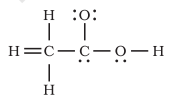
Answer :
Here hydrogen atom is bonded to carbon with a double bond, which is not possible because hydrogen has only one electron to share with carbon.
Also, the second carbon does not have its valency satisfied.
Therefore, the correct skeletal structure of as shown below:
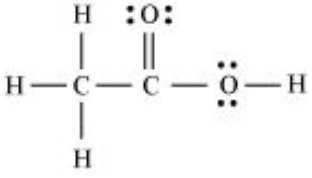
Answer :
The electronic configuration of carbon atom is .
Where it has s-orbital, p-orbital only and there is no d-orbital present.
Hence the carbon atom undergoes hybridization in methane molecule and takes a tetrahedral shape.
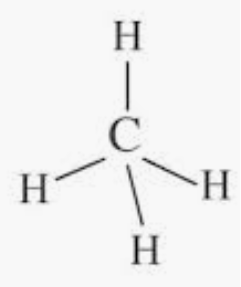 And for a molecule to have a square planar structure it must have d orbital present.
And for a molecule to have a square planar structure it must have d orbital present.
But here the absence of d-orbital, as a result, it does not undergo hybridization, the structure of methane cannot be square planar.
Also the reason that bond angle in square planar which makes the molecule more unstable because of repulsion between the bond pairs.
Hence according to VSEPR theory molecule take a tetrahedral structure.
Question 4.22 Explain why molecule has a zero dipole moment although the
bonds are polar.
Answer :
molecule has a zero dipole moment because the two equal bond dipoles point in the opposite directions and cancel the effect of each other.

Question 4.23 Which out of and
has higher dipole moment and why ?
Answer :
Here both have central atom Nitrogen and it has a lone pair of electrons with three bond pairs.
Hence both molecules have a pyramidal shape.
The electronegativity of fluorine is more as compared to the hydrogen. Hence it is expected that the net dipole moment of is greater than
.
However has the net dipole moment of 1.46D and
has the net dipole moment of 0.24D. which is greater than
.
This is because of the direction of the dipole moments of each individual bond in and
.
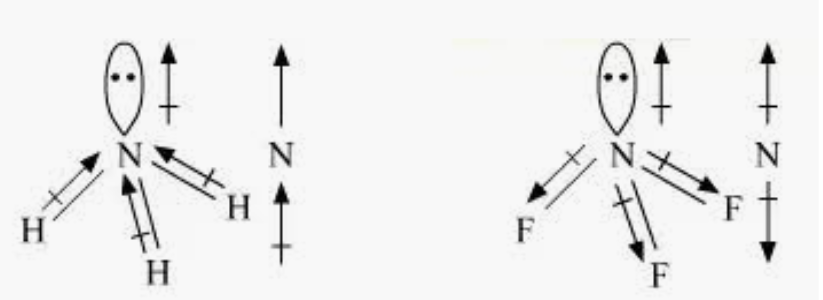
The moments of the lone pair in partly cancel out. But in
the resultant moment add up to the bond moment of the lone pair.
Question 4.24 What is meant by hybridisation of atomic orbitals ? Describe the shapes of ,
,
hybrid orbitals.
Answer :
Hybridisation which can be defined as the process of intermixing of the orbitals of slightly different energies so as to redistribute their energies, resulting in the formation of a new set of orbitals of equivalent energies and shape.
The shapes of ,
,
hybrid orbitals are shown:
hybrid orbital: It is linear in shape and formed by intermixing of s and p orbitals.

hybrid orbital: It is the trigonal planar shape and is formed by the intermixing of one s-orbital and two 2p-orbitals.
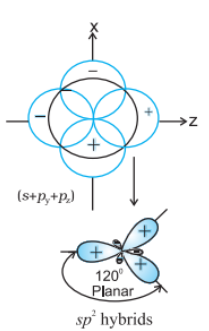
hybrid orbital: It is tetrahedron in shape and is formed by the intermixing of one s-orbital and three p-orbitals.
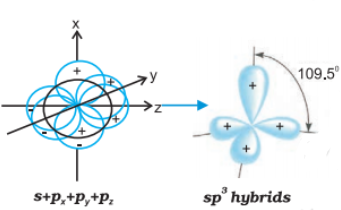
Question 4.25 Describe the change in hybridisation (if any) of the atom in the following reaction.
Answer :
Initially, the aluminium is in the ground state and the valence orbital can be shown as:
 Then the electron gets excited so, the valence orbital can be shown as:
Then the electron gets excited so, the valence orbital can be shown as:
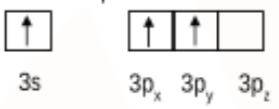
So, initially, aluminium was
hybridisation and hence having a trigonal planar shape.
Then it reacts with chloride ion to form . Where it has the empty
orbital which gets involved and the hybridisation changes from
.
Hence there is a shape change from trigonal planar to tetrahedral.
Question 4.26 Is there any change in the hybridisation of and
atoms as a result of the following reaction?
Answer :
Initially boron atom was in
hybridised. The valence orbital of boron in the excited state can be shown as:
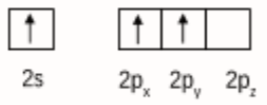
And nitrogen atom in is
hybridised. The valence orbital of nitrogen in the excited state can be shown as:

Then after the reaction has occured the product is formed by the hybridisation of 'B' changes to
. However, the hybridisation of 'N' remains unchanged.
Question 4.27 Draw diagrams showing the formation of a double bond and a triple bond between carbon atoms in and
molecules.
Answer :
We have the electronic configuration of C-atom in the excited state is:
Formation of an ethane molecule by overlapping of a
hybridized orbital of another carbon atom, thereby forming a
sigma bond.
The remaining two orbitals of each carbon atom from a
sigma bond with two hydrogen atoms. The unhybridized orbital of one carbon atom undergoes sidewise overlap with the orbital of a similar kind present on another carbon atom to form a weak n-bond.
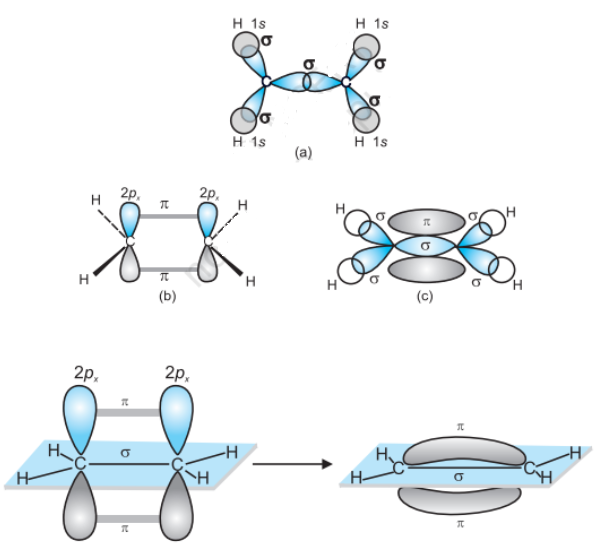
Formation of molecule, each C-atom is sp hybridized with two 2p-orbitals in an unhybridized state.
One sp hybrid orbital of one carbon atom overlaps axially with sp hybrid orbital of the other carbon atom to form C–C sigma bond, while the other hybridised orbital of each carbon atom overlaps axially with the half-filled s orbital of hydrogen atoms forming σ bonds
Each of the two unhybridised p orbitals of both the carbon atoms overlaps sidewise to form two π bonds between the carbon atoms. So the triple bond between the two carbon atoms is made up of one sigma and two pi bonds as shown in Fig
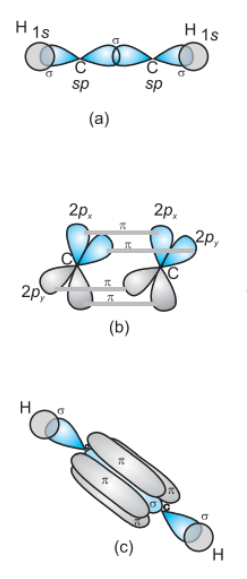
Question 4.28(a) What is the total number of sigma and pi bonds in the following molecules?
Answer :
Given molecule :
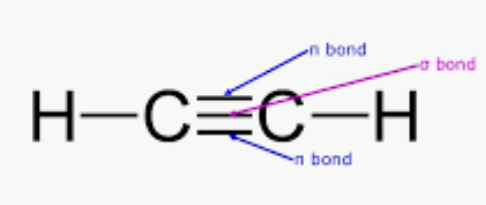
So, there is three sigmas (2C-H bonds + 1 C-C bond) and two pi-bonds (2 C-C bonds) in .
Question 4.28(b) What is the total number of sigma and pi bonds in the following molecules?
Answer :
Given molecule :

So, there are five sigma (4C-H bonds + 1 C-C bond) and one pi-bonds (C-C bonds) in .
Question 4.29(a) Considering x-axis as the internuclear axis which out of the following will not form a sigma bond and why?
Answer :
Orbitals will form a sigma bond as both orbitals are spherical and can combine along x-axis as the internuclear axis.

Question 4.29(b) Considering x-axis as the internuclear axis which out of the following will not form a sigma bond and why?
Answer :
Orbitals will form a sigma bond as 1s orbital and 2p x orbital are align such that they can combine along x-axis as the internuclear axis.

Question 4.29(c) Considering x-axis as the internuclear axis which out of the following will not form a sigma bond and why?
Answer :
Orbitals will not form a sigma bond as both 2p y orbital are align in y -direction but the internuclear axis is x-axis.

Formation of pi bond takes place.
Question 4.29(d) Considering x-axis as the internuclear axis which out of the following will not form a sigma bond and why?
Answer :
Orbitals will form a sigma bond as both 1s and 2s orbitals are spherical and can combine along the x-axis as the internuclear axis.
Question 4.30(a) Which hybrid orbitals are used by carbon atoms in the following molecules?
Answer :
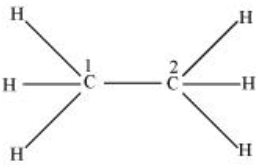
There are 4 sigma bonds (single bond) each with the help of one s hybrid orbital and 3 p hybrid orbital, Hence C 1 and C 2 are hybridized.
Question 4.30(b) Which hybrid orbitals are used by carbon atoms in the following molecules?
Answer :
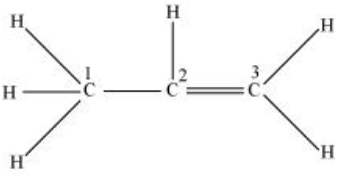
is making 4 sigma bonds (single bond) therefore it is
hybridised.
While are making a double bond.
Therefore they both are hybridized.
Question 4.30(c) Which hybrid orbitals are used by carbon atoms in the following molecules?
Answer :

is making 4 sigma bonds (single bond) therefore it is
hybridised.
and is also making a 4 sigma bonds. therefore it is also
hybridised.
Therefore they both are hybridized.
Question 4.30(d) Which hybrid orbitals are used by carbon atoms in the following molecules?
Answer :
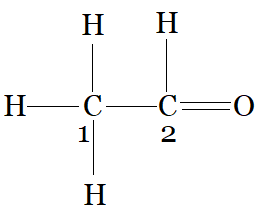
is making 4 sigma bonds (single bond) therefore it is
hybridised.
and is making a 3 sigma bonds with hydrogen, carbon and oxygen. and one pi bond with oxygen therefore it is
hybridised.
Question 4.30(e) Which hybrid orbitals are used by carbon atoms in the following molecules?
Answer :
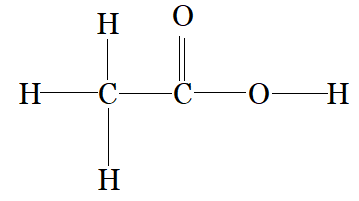
is making 4 sigma bonds (single bond) therefore it is
hybridised.
and is making a 2 sigma bonds with carbon and 1 sigma bond with oxygen and one pi bond with oxygen therefore it is
hybridised.
Question 4.31 What do you understand by bond pairs and lone pairs of electrons? Illustrate by giving one exmaple of each type.
Answer :
The shared pairs of electrons present between the bonded atoms are called bond pairs.
And all valence electrons may not participate in bonding that electron pairs that do not participate in bonding are called lone pairs of electrons.
For examples,
In ethane, there are seven bond pairs but no lone pair is present.
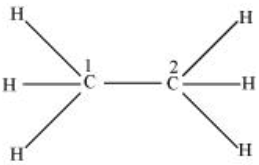
In , there are two bond pairs and two lone pairs on the central atom (oxygen).
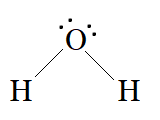

Question 4.32 Distinguish between a sigma and a pi bond.
Answer :
Difference between the sigma bond and the pi bond is shown in the table below:
Sigma | Pi |
(a) Formed by end to end overlapping of orbitals. | Formed by the lateral overlapping of orbitals |
(b) Sigma bonds are stronger than the pi bond. | Weak bond. |
(c) The orbitals involved in the overlapping are s-s, s-p, p-p. | Bonds are formed only with overlapping of p-p orbitals. |
(d) The electron cloud is symmetrical about an internuclear axis. | The electron cloud is not symmetrical. |
(e) Free rotation is possible in case of a sigma bond. | Rotation is restricted in case of pi-bonds. |
Question 4.33 Explain the formation of molecule on the basis of valence bond theory.
Answer :
Formation of molecule:
Assume that two hydrogen atoms with nuclei
and electrons
are taken to undergo a reaction to form a hydrogen molecule.
When the two atoms are at a large distance, there is no interaction between them. As they approach each other, the attractive and repulsive forces start operating.
Attractive force arises between:
(a) The nucleus of one atom and its own electron i.e., and
.
(b) The nucleus of one atom and electron of another atom i.e., and
Repulsive force arises between:
(a) Electrons of two atoms i.e., .
(b) Nuclei of two atoms i.e., .
The force of attraction brings the two atoms together, whereas the force of repulsion tends to push them apart.
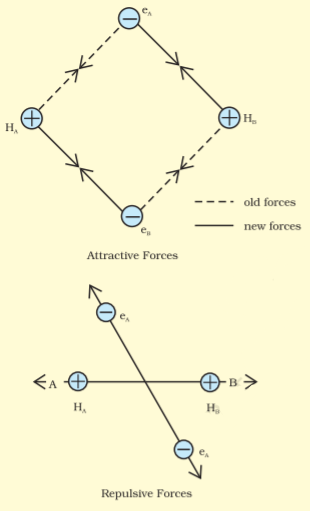
The attractive force overcomes the repulsive force. Hence, the two atoms approach each other. As a result, the potential energy decreases. Finally, a state is achieved when the attractive forces balance the repulsive forces and the system acquires minimum energy. This leads to the formation of a dihydrogen molecule.
Question 4.34 Write the important conditions required for the linear combination of atomic orbitals to form molecular orbitals.
Answer :
The important conditions required for the linear combination of atomic orbitals to form molecular orbitals are as follows:
1. The combining atomic orbitals must have the same or nearly the same energy.
2..The combining atomic orbitals must have the same symmetry about the molecular axis.
3. The combining atomic orbitals must overlap to the maximum extent.
Question 4.35 Use molecular orbital theory to explain why the molecule does not exist.
Answer :
The electronic configuration of Be is .
From the molecular orbital electronic configuration, we have for molecule,
We can calculate the bond order for is
where,
is the number of electrons in bonding orbitals and
is the number of electrons in anti-bonding orbitals.
So, therefore we have,
Bond order of
that means that the molecule is unstable.
Hence, molecule does not exist.
Question 4.36 Compare the relative stability of the following species and indicate their magnetic properties;
Answer :
The electronic configuration of molecule can be written as:
Here the number of bonding electrons is and the number of antibonding electrons is
.
Therefore,
The electronic configuration of molecule can be written as:
Here the number of bonding electrons is and the number of antibonding electrons is
.
Therefore,
The electronic configuration of molecule can be written as:
Here the number of bonding electrons is and the number of antibonding electrons is
.
Therefore,
The electronic configuration of molecule can be written as:
Here the number of bonding electrons is and the number of antibonding electrons is
.
Therefore,
Therefore, the bond dissociation energy is directly proportional to the bond order.
Thus, the higher the bond order, the greater will be the stability.
We get this order of stability:
Question 4.37 Write the significance of a plus and a minus sign shown in representing the orbitals.
Answer :
Wave functions can be used to represent molecular orbitals. The plus and minus represent the positive wave function while negative wave function respectively.
Question 4.38 Describe the hybridisation in case of Why are the axial bonds longer as compared to equatorial bonds?
Answer :
The initial ground state and final excited state electronic configuration of phosphorus (P) are:
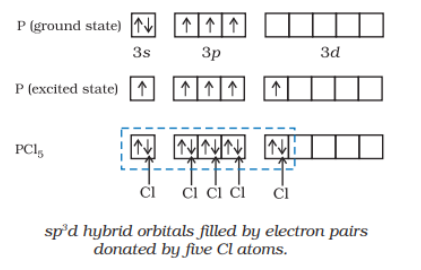
So, the phosphorus atom is hybridized in the excited state.The donated electron pairs by five Cl atoms are filled and make
.
The resultant shape is trigonal bipyramidal and the five hybrid orbitals are directed towards the five corners.
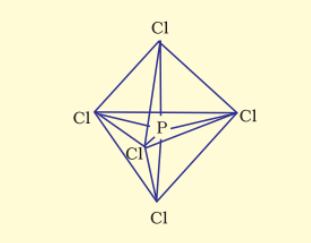
The five P-Cl sigma bonds, three lies in one plane and make with each other are equatorial bonds and the two P-Cl bonds lie above and below the equatorial plane makes an angle of
with the plane are axial bonds.
So, just because of more repulsion from the equatorial bond pairs, the axial bonds are slightly longer than equatorial bonds.
Question 4.39 Define hydrogen bond. Is it weaker or stronger than the van der Waals forces?
Answer :
Hydrogen bond can be defined as the attractive force acting between the hydrogen atom of one molecule with the electronegative atom (F, O or N) of another molecule.
Because of the difference between electro-negativities, the bond pair between hydrogen and the electronegative atom gets drifted towards a more electronegative atom. As a result, the hydrogen atom becomes slightly positively charged.

Hydrogen bonds are stronger than the van der Waals forces because H-bonds are considered as an extreme form of dipole-dipole interaction.
Question 4.40 What is meant by the term bond order? Calculate the bond order of :
Answer :
Bond order (B.O.) is defined as one half the difference between the number of electrons present in the bonding and the antibonding orbitals of a molecule.
Where are the number of electrons occupying bonding orbitals and the number occupying the antibonding orbitals respectively.
So, bond order for different molecules are:
: The electronic configuration is
Where, the number of bonding electrons and number of antibonding electrons,
So, Bond order of nitrogen molecule
: The electronic configuration is
Where, the number of bonding electrons and number of antibonding electrons,
So, Bond order of nitrogen molecule
: The electronic configuration is
Where, the number of bonding electrons and number of antibonding electrons,
So, Bond order of molecule
: The electronic configuration is
Where, the number of bonding electrons and number of antibonding electrons,
So, Bond order of molecule
More About Chemical Bonding And Molecular Structure Class 11 NCERT Solutions
The NCERT solutions for class 11 chemistry chapter 4 Chemical Bonding and Molecular Structure is an important chapter for both class 11 final examination and for various competitive exams like JEE and NEET. After completing NCERT solutions for class 11 chemistry chapter 4 Chemical Bonding and Molecular Structure, you will be able to understand Kossel-Lewis approach to chemical bonding; explain the octet rule, draw Lewis structures of simple molecules; explain the formation of different types of bonds, able to describe VSEPR theory; explain the valence bond approach for the formation of covalent bonds; explain the concept of different types of hybridization that involves s, d and p orbitals; molecular orbital theory(MOT) and hydrogen bonding.
What is Chemical Bond?
The matter is made up of one or more than one type of elements but under normal conditions, except noble gases, no other element exists as an independent atom in nature. As independent entities, molecules are the smallest particles of matter. These molecules are cluster or group of atoms of same or different elements which are found exist together as a single unit having characteristic properties. So, a chemical bond is the force of attraction which holds various atoms ( constituents, ions etc.) together in different chemical species.
Chemical Bonding And Molecular Structure Class 11 NCERT Topics
4.1 Kössel-Lewis Approach to Chemical Bonding
4.2 Ionic or Electrovalent Bond
4.3 Bond Parameters
4.4 The Valence Shell Electron Pair Repulsion (VSEPR) Theory
4.5 Valence Bond Theory
4.6 Hybridisation
4.7 Molecular Orbital Theory
4.8 Bonding in Some Homonuclear Diatomic Molecules
4.9 Hydrogen Bonding
NCERT Solutions For Class 11 Chemistry
Chapter 1 | |
Chapter-2 | |
Chapter-3 | |
Chapter-4 | Chemical Bonding and Molecular Structure |
Chapter-5 | |
Chapter-6 | |
Chapter-7 | |
Chapter-8 | |
Chapter-9 | |
Chapter-10 | |
Chapter-11 | |
Chapter-12 | |
Chapter-13 | |
Chapter-14 |
NCERT Solutions For Class 11 Subject Wise
- NCERT solutions for Class 11 Biology
- NCERT solutions for Class 11 Maths
- NCERT solutions for Class 11 Chemistry
- NCERT solutions for Class 11 Physics
Benefits Of NCERT Solutions For Class 11 Chemistry Chapter 4 Chemical Bonding And Molecular Structure
- The answers presented in a comprehensive manner in the NCERT solutions for class 11 chemistry chapter 4 Chemical Bonding and Molecular Structure will help in understanding chapter easily.
- It will be easy to revise because the detailed solutions will help you to remember the concepts and fetch you good marks.
- Homework problems won't bother you anymore, all you need to do is check the detailed NCERT solutions for class 11 chemistry chapter 4 Chemical Bonding and Molecular Structure and you are good to go.
If you have a doubt or question that is not available here or in any of the chapters, contact us. You will get all the answers that will help you score well in your exams.
Also Check NCERT Books and NCERT Syllabus here:
Frequently Asked Question (FAQs)
complete solutions of NCERT class 11 Chemistry: https://school.careers360.com/ncert/ncert-solutions-class-11-chemistry
Most of the questions are asked directly from NCERT, hence it is must to do NCERT solutions
Yes, it is very helpful for further studies as this is one of the basic chapter in chemistry syllabus.
Weightage of Chemical Bonding and Molecular Structure is 7 marks
Link to official website of NCERT: http://www.ncert.nic.in/ . NCERT book and exemplar are available in the official site.
Atleast 2 questions are asked from this chapter for NEET exam. This is an important chapter for NEET preparation. Solve at least 5 previous year papers of NEET exam to understand the type of questions asked and understand the areas need to be concentrated.
Also Read
Articles
Popular Questions
Colleges After 12th
Popular Course After 12th
Explore Career Options (By Industry)
Data Administrator
Database professionals use software to store and organise data such as financial information, and customer shipping records. Individuals who opt for a career as data administrators ensure that data is available for users and secured from unauthorised sales. DB administrators may work in various types of industries. It may involve computer systems design, service firms, insurance companies, banks and hospitals.
Bio Medical Engineer
The field of biomedical engineering opens up a universe of expert chances. An Individual in the biomedical engineering career path work in the field of engineering as well as medicine, in order to find out solutions to common problems of the two fields. The biomedical engineering job opportunities are to collaborate with doctors and researchers to develop medical systems, equipment, or devices that can solve clinical problems. Here we will be discussing jobs after biomedical engineering, how to get a job in biomedical engineering, biomedical engineering scope, and salary.
Ethical Hacker
A career as ethical hacker involves various challenges and provides lucrative opportunities in the digital era where every giant business and startup owns its cyberspace on the world wide web. Individuals in the ethical hacker career path try to find the vulnerabilities in the cyber system to get its authority. If he or she succeeds in it then he or she gets its illegal authority. Individuals in the ethical hacker career path then steal information or delete the file that could affect the business, functioning, or services of the organization.
GIS Expert
GIS officer work on various GIS software to conduct a study and gather spatial and non-spatial information. GIS experts update the GIS data and maintain it. The databases include aerial or satellite imagery, latitudinal and longitudinal coordinates, and manually digitized images of maps. In a career as GIS expert, one is responsible for creating online and mobile maps.
Data Analyst
The invention of the database has given fresh breath to the people involved in the data analytics career path. Analysis refers to splitting up a whole into its individual components for individual analysis. Data analysis is a method through which raw data are processed and transformed into information that would be beneficial for user strategic thinking.
Data are collected and examined to respond to questions, evaluate hypotheses or contradict theories. It is a tool for analyzing, transforming, modeling, and arranging data with useful knowledge, to assist in decision-making and methods, encompassing various strategies, and is used in different fields of business, research, and social science.
Geothermal Engineer
Individuals who opt for a career as geothermal engineers are the professionals involved in the processing of geothermal energy. The responsibilities of geothermal engineers may vary depending on the workplace location. Those who work in fields design facilities to process and distribute geothermal energy. They oversee the functioning of machinery used in the field.
Database Architect
If you are intrigued by the programming world and are interested in developing communications networks then a career as database architect may be a good option for you. Data architect roles and responsibilities include building design models for data communication networks. Wide Area Networks (WANs), local area networks (LANs), and intranets are included in the database networks. It is expected that database architects will have in-depth knowledge of a company's business to develop a network to fulfil the requirements of the organisation. Stay tuned as we look at the larger picture and give you more information on what is db architecture, why you should pursue database architecture, what to expect from such a degree and what your job opportunities will be after graduation. Here, we will be discussing how to become a data architect. Students can visit NIT Trichy, IIT Kharagpur, JMI New Delhi.
Remote Sensing Technician
Individuals who opt for a career as a remote sensing technician possess unique personalities. Remote sensing analysts seem to be rational human beings, they are strong, independent, persistent, sincere, realistic and resourceful. Some of them are analytical as well, which means they are intelligent, introspective and inquisitive.
Remote sensing scientists use remote sensing technology to support scientists in fields such as community planning, flight planning or the management of natural resources. Analysing data collected from aircraft, satellites or ground-based platforms using statistical analysis software, image analysis software or Geographic Information Systems (GIS) is a significant part of their work. Do you want to learn how to become remote sensing technician? There's no need to be concerned; we've devised a simple remote sensing technician career path for you. Scroll through the pages and read.
Budget Analyst
Budget analysis, in a nutshell, entails thoroughly analyzing the details of a financial budget. The budget analysis aims to better understand and manage revenue. Budget analysts assist in the achievement of financial targets, the preservation of profitability, and the pursuit of long-term growth for a business. Budget analysts generally have a bachelor's degree in accounting, finance, economics, or a closely related field. Knowledge of Financial Management is of prime importance in this career.
Data Analyst
The invention of the database has given fresh breath to the people involved in the data analytics career path. Analysis refers to splitting up a whole into its individual components for individual analysis. Data analysis is a method through which raw data are processed and transformed into information that would be beneficial for user strategic thinking.
Data are collected and examined to respond to questions, evaluate hypotheses or contradict theories. It is a tool for analyzing, transforming, modeling, and arranging data with useful knowledge, to assist in decision-making and methods, encompassing various strategies, and is used in different fields of business, research, and social science.
Underwriter
An underwriter is a person who assesses and evaluates the risk of insurance in his or her field like mortgage, loan, health policy, investment, and so on and so forth. The underwriter career path does involve risks as analysing the risks means finding out if there is a way for the insurance underwriter jobs to recover the money from its clients. If the risk turns out to be too much for the company then in the future it is an underwriter who will be held accountable for it. Therefore, one must carry out his or her job with a lot of attention and diligence.
Product Manager
A Product Manager is a professional responsible for product planning and marketing. He or she manages the product throughout the Product Life Cycle, gathering and prioritising the product. A product manager job description includes defining the product vision and working closely with team members of other departments to deliver winning products.
Operations Manager
Individuals in the operations manager jobs are responsible for ensuring the efficiency of each department to acquire its optimal goal. They plan the use of resources and distribution of materials. The operations manager's job description includes managing budgets, negotiating contracts, and performing administrative tasks.
Stock Analyst
Individuals who opt for a career as a stock analyst examine the company's investments makes decisions and keep track of financial securities. The nature of such investments will differ from one business to the next. Individuals in the stock analyst career use data mining to forecast a company's profits and revenues, advise clients on whether to buy or sell, participate in seminars, and discussing financial matters with executives and evaluate annual reports.
Researcher
A Researcher is a professional who is responsible for collecting data and information by reviewing the literature and conducting experiments and surveys. He or she uses various methodological processes to provide accurate data and information that is utilised by academicians and other industry professionals. Here, we will discuss what is a researcher, the researcher's salary, types of researchers.
Welding Engineer
Welding Engineer Job Description: A Welding Engineer work involves managing welding projects and supervising welding teams. He or she is responsible for reviewing welding procedures, processes and documentation. A career as Welding Engineer involves conducting failure analyses and causes on welding issues.
Transportation Planner
A career as Transportation Planner requires technical application of science and technology in engineering, particularly the concepts, equipment and technologies involved in the production of products and services. In fields like land use, infrastructure review, ecological standards and street design, he or she considers issues of health, environment and performance. A Transportation Planner assigns resources for implementing and designing programmes. He or she is responsible for assessing needs, preparing plans and forecasts and compliance with regulations.
Environmental Engineer
Individuals who opt for a career as an environmental engineer are construction professionals who utilise the skills and knowledge of biology, soil science, chemistry and the concept of engineering to design and develop projects that serve as solutions to various environmental problems.
Safety Manager
A Safety Manager is a professional responsible for employee’s safety at work. He or she plans, implements and oversees the company’s employee safety. A Safety Manager ensures compliance and adherence to Occupational Health and Safety (OHS) guidelines.
Conservation Architect
A Conservation Architect is a professional responsible for conserving and restoring buildings or monuments having a historic value. He or she applies techniques to document and stabilise the object’s state without any further damage. A Conservation Architect restores the monuments and heritage buildings to bring them back to their original state.
Structural Engineer
A Structural Engineer designs buildings, bridges, and other related structures. He or she analyzes the structures and makes sure the structures are strong enough to be used by the people. A career as a Structural Engineer requires working in the construction process. It comes under the civil engineering discipline. A Structure Engineer creates structural models with the help of computer-aided design software.
Highway Engineer
Highway Engineer Job Description: A Highway Engineer is a civil engineer who specialises in planning and building thousands of miles of roads that support connectivity and allow transportation across the country. He or she ensures that traffic management schemes are effectively planned concerning economic sustainability and successful implementation.
Field Surveyor
Are you searching for a Field Surveyor Job Description? A Field Surveyor is a professional responsible for conducting field surveys for various places or geographical conditions. He or she collects the required data and information as per the instructions given by senior officials.
Orthotist and Prosthetist
Orthotists and Prosthetists are professionals who provide aid to patients with disabilities. They fix them to artificial limbs (prosthetics) and help them to regain stability. There are times when people lose their limbs in an accident. In some other occasions, they are born without a limb or orthopaedic impairment. Orthotists and prosthetists play a crucial role in their lives with fixing them to assistive devices and provide mobility.
Pathologist
A career in pathology in India is filled with several responsibilities as it is a medical branch and affects human lives. The demand for pathologists has been increasing over the past few years as people are getting more aware of different diseases. Not only that, but an increase in population and lifestyle changes have also contributed to the increase in a pathologist’s demand. The pathology careers provide an extremely huge number of opportunities and if you want to be a part of the medical field you can consider being a pathologist. If you want to know more about a career in pathology in India then continue reading this article.
Gynaecologist
Gynaecology can be defined as the study of the female body. The job outlook for gynaecology is excellent since there is evergreen demand for one because of their responsibility of dealing with not only women’s health but also fertility and pregnancy issues. Although most women prefer to have a women obstetrician gynaecologist as their doctor, men also explore a career as a gynaecologist and there are ample amounts of male doctors in the field who are gynaecologists and aid women during delivery and childbirth.
Audiologist
The audiologist career involves audiology professionals who are responsible to treat hearing loss and proactively preventing the relevant damage. Individuals who opt for a career as an audiologist use various testing strategies with the aim to determine if someone has a normal sensitivity to sounds or not. After the identification of hearing loss, a hearing doctor is required to determine which sections of the hearing are affected, to what extent they are affected, and where the wound causing the hearing loss is found. As soon as the hearing loss is identified, the patients are provided with recommendations for interventions and rehabilitation such as hearing aids, cochlear implants, and appropriate medical referrals. While audiology is a branch of science that studies and researches hearing, balance, and related disorders.
Oncologist
An oncologist is a specialised doctor responsible for providing medical care to patients diagnosed with cancer. He or she uses several therapies to control the cancer and its effect on the human body such as chemotherapy, immunotherapy, radiation therapy and biopsy. An oncologist designs a treatment plan based on a pathology report after diagnosing the type of cancer and where it is spreading inside the body.
Anatomist
Are you searching for an ‘Anatomist job description’? An Anatomist is a research professional who applies the laws of biological science to determine the ability of bodies of various living organisms including animals and humans to regenerate the damaged or destroyed organs. If you want to know what does an anatomist do, then read the entire article, where we will answer all your questions.
Actor
For an individual who opts for a career as an actor, the primary responsibility is to completely speak to the character he or she is playing and to persuade the crowd that the character is genuine by connecting with them and bringing them into the story. This applies to significant roles and littler parts, as all roles join to make an effective creation. Here in this article, we will discuss how to become an actor in India, actor exams, actor salary in India, and actor jobs.
Acrobat
Individuals who opt for a career as acrobats create and direct original routines for themselves, in addition to developing interpretations of existing routines. The work of circus acrobats can be seen in a variety of performance settings, including circus, reality shows, sports events like the Olympics, movies and commercials. Individuals who opt for a career as acrobats must be prepared to face rejections and intermittent periods of work. The creativity of acrobats may extend to other aspects of the performance. For example, acrobats in the circus may work with gym trainers, celebrities or collaborate with other professionals to enhance such performance elements as costume and or maybe at the teaching end of the career.
Video Game Designer
Career as a video game designer is filled with excitement as well as responsibilities. A video game designer is someone who is involved in the process of creating a game from day one. He or she is responsible for fulfilling duties like designing the character of the game, the several levels involved, plot, art and similar other elements. Individuals who opt for a career as a video game designer may also write the codes for the game using different programming languages.
Depending on the video game designer job description and experience they may also have to lead a team and do the early testing of the game in order to suggest changes and find loopholes.
Radio Jockey
Radio Jockey is an exciting, promising career and a great challenge for music lovers. If you are really interested in a career as radio jockey, then it is very important for an RJ to have an automatic, fun, and friendly personality. If you want to get a job done in this field, a strong command of the language and a good voice are always good things. Apart from this, in order to be a good radio jockey, you will also listen to good radio jockeys so that you can understand their style and later make your own by practicing.
A career as radio jockey has a lot to offer to deserving candidates. If you want to know more about a career as radio jockey, and how to become a radio jockey then continue reading the article.
Choreographer
The word “choreography" actually comes from Greek words that mean “dance writing." Individuals who opt for a career as a choreographer create and direct original dances, in addition to developing interpretations of existing dances. A Choreographer dances and utilises his or her creativity in other aspects of dance performance. For example, he or she may work with the music director to select music or collaborate with other famous choreographers to enhance such performance elements as lighting, costume and set design.
Social Media Manager
A career as social media manager involves implementing the company’s or brand’s marketing plan across all social media channels. Social media managers help in building or improving a brand’s or a company’s website traffic, build brand awareness, create and implement marketing and brand strategy. Social media managers are key to important social communication as well.
Photographer
Photography is considered both a science and an art, an artistic means of expression in which the camera replaces the pen. In a career as a photographer, an individual is hired to capture the moments of public and private events, such as press conferences or weddings, or may also work inside a studio, where people go to get their picture clicked. Photography is divided into many streams each generating numerous career opportunities in photography. With the boom in advertising, media, and the fashion industry, photography has emerged as a lucrative and thrilling career option for many Indian youths.
Producer
An individual who is pursuing a career as a producer is responsible for managing the business aspects of production. They are involved in each aspect of production from its inception to deception. Famous movie producers review the script, recommend changes and visualise the story.
They are responsible for overseeing the finance involved in the project and distributing the film for broadcasting on various platforms. A career as a producer is quite fulfilling as well as exhaustive in terms of playing different roles in order for a production to be successful. Famous movie producers are responsible for hiring creative and technical personnel on contract basis.
Copy Writer
In a career as a copywriter, one has to consult with the client and understand the brief well. A career as a copywriter has a lot to offer to deserving candidates. Several new mediums of advertising are opening therefore making it a lucrative career choice. Students can pursue various copywriter courses such as Journalism, Advertising, Marketing Management. Here, we have discussed how to become a freelance copywriter, copywriter career path, how to become a copywriter in India, and copywriting career outlook.
Vlogger
In a career as a vlogger, one generally works for himself or herself. However, once an individual has gained viewership there are several brands and companies that approach them for paid collaboration. It is one of those fields where an individual can earn well while following his or her passion.
Ever since internet costs got reduced the viewership for these types of content has increased on a large scale. Therefore, a career as a vlogger has a lot to offer. If you want to know more about the Vlogger eligibility, roles and responsibilities then continue reading the article.
Publisher
For publishing books, newspapers, magazines and digital material, editorial and commercial strategies are set by publishers. Individuals in publishing career paths make choices about the markets their businesses will reach and the type of content that their audience will be served. Individuals in book publisher careers collaborate with editorial staff, designers, authors, and freelance contributors who develop and manage the creation of content.
Journalist
Careers in journalism are filled with excitement as well as responsibilities. One cannot afford to miss out on the details. As it is the small details that provide insights into a story. Depending on those insights a journalist goes about writing a news article. A journalism career can be stressful at times but if you are someone who is passionate about it then it is the right choice for you. If you want to know more about the media field and journalist career then continue reading this article.
Editor
Individuals in the editor career path is an unsung hero of the news industry who polishes the language of the news stories provided by stringers, reporters, copywriters and content writers and also news agencies. Individuals who opt for a career as an editor make it more persuasive, concise and clear for readers. In this article, we will discuss the details of the editor's career path such as how to become an editor in India, editor salary in India and editor skills and qualities.
Reporter
Individuals who opt for a career as a reporter may often be at work on national holidays and festivities. He or she pitches various story ideas and covers news stories in risky situations. Students can pursue a BMC (Bachelor of Mass Communication), B.M.M. (Bachelor of Mass Media), or MAJMC (MA in Journalism and Mass Communication) to become a reporter. While we sit at home reporters travel to locations to collect information that carries a news value.
Corporate Executive
Are you searching for a Corporate Executive job description? A Corporate Executive role comes with administrative duties. He or she provides support to the leadership of the organisation. A Corporate Executive fulfils the business purpose and ensures its financial stability. In this article, we are going to discuss how to become corporate executive.
Multimedia Specialist
A multimedia specialist is a media professional who creates, audio, videos, graphic image files, computer animations for multimedia applications. He or she is responsible for planning, producing, and maintaining websites and applications.
Welding Engineer
Welding Engineer Job Description: A Welding Engineer work involves managing welding projects and supervising welding teams. He or she is responsible for reviewing welding procedures, processes and documentation. A career as Welding Engineer involves conducting failure analyses and causes on welding issues.
Quality Controller
A quality controller plays a crucial role in an organisation. He or she is responsible for performing quality checks on manufactured products. He or she identifies the defects in a product and rejects the product.
A quality controller records detailed information about products with defects and sends it to the supervisor or plant manager to take necessary actions to improve the production process.
Product Manager
A Product Manager is a professional responsible for product planning and marketing. He or she manages the product throughout the Product Life Cycle, gathering and prioritising the product. A product manager job description includes defining the product vision and working closely with team members of other departments to deliver winning products.
QA Lead
A QA Lead is in charge of the QA Team. The role of QA Lead comes with the responsibility of assessing services and products in order to determine that he or she meets the quality standards. He or she develops, implements and manages test plans.
Structural Engineer
A Structural Engineer designs buildings, bridges, and other related structures. He or she analyzes the structures and makes sure the structures are strong enough to be used by the people. A career as a Structural Engineer requires working in the construction process. It comes under the civil engineering discipline. A Structure Engineer creates structural models with the help of computer-aided design software.
Process Development Engineer
The Process Development Engineers design, implement, manufacture, mine, and other production systems using technical knowledge and expertise in the industry. They use computer modeling software to test technologies and machinery. An individual who is opting career as Process Development Engineer is responsible for developing cost-effective and efficient processes. They also monitor the production process and ensure it functions smoothly and efficiently.
AWS Solution Architect
An AWS Solution Architect is someone who specializes in developing and implementing cloud computing systems. He or she has a good understanding of the various aspects of cloud computing and can confidently deploy and manage their systems. He or she troubleshoots the issues and evaluates the risk from the third party.
Azure Administrator
An Azure Administrator is a professional responsible for implementing, monitoring, and maintaining Azure Solutions. He or she manages cloud infrastructure service instances and various cloud servers as well as sets up public and private cloud systems.
Computer Programmer
Careers in computer programming primarily refer to the systematic act of writing code and moreover include wider computer science areas. The word 'programmer' or 'coder' has entered into practice with the growing number of newly self-taught tech enthusiasts. Computer programming careers involve the use of designs created by software developers and engineers and transforming them into commands that can be implemented by computers. These commands result in regular usage of social media sites, word-processing applications and browsers.
Product Manager
A Product Manager is a professional responsible for product planning and marketing. He or she manages the product throughout the Product Life Cycle, gathering and prioritising the product. A product manager job description includes defining the product vision and working closely with team members of other departments to deliver winning products.
Information Security Manager
Individuals in the information security manager career path involves in overseeing and controlling all aspects of computer security. The IT security manager job description includes planning and carrying out security measures to protect the business data and information from corruption, theft, unauthorised access, and deliberate attack
Automation Test Engineer
An Automation Test Engineer job involves executing automated test scripts. He or she identifies the project’s problems and troubleshoots them. The role involves documenting the defect using management tools. He or she works with the application team in order to resolve any issues arising during the testing process.
